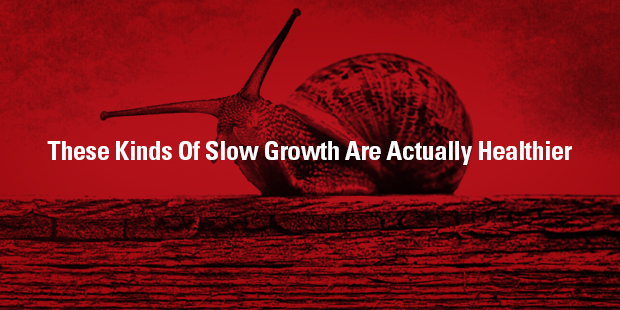
These Kinds of Slow Growth are Actually Healthier
Every church has a pace built into the culture of its people. Some churches move more slowly. Some move more quickly. While most established churches likely need to pick up the pace, a slow pace does not necessarily mean the church is complacent.
Complacent churches are self-satisfied and are unwilling to address problems. Unfortunately, far too many churches are complacent. But don’t confuse complacency with a slow pace. Some congregations are willing to move forward; it just takes them a little longer. A few factors may influence the slow pace of a church.
The community may move at a slower pace. The church is simply reflecting the greater culture of the community. For example, rural communities tend to change less quickly. A church that moves too quickly in a slow-moving farming community may actually become less relevant.
A slow pace may point to stability, not entrenchment. It’s hard to move rapidly and also be stable. Slow-moving stability can be better for some church cultures. The downside of this pattern is it can create ruts of entrenchment, but it doesn’t have to be the case. When used strategically, stability can advance discipleship, sacrificial giving, and equipping—none of which point to complacency.
Leaders may guide the church methodically. Not every leader is designed to push forward with intensity. Not every church needs a hard-charging pastor full of ambition and ideas. Some church leaders plod thoughtfully, with intention and strategy. Plodding leaders are not complacent leaders.
The season of a church may necessitate a slower pace. When a church needs to heal, it almost always needs to slow down. A church may go through months, if not years, of a slower pace. This intentional slowdown may be the opposite of complacency. It could be the problem is the fast pace.
Passion is not always fast. Restoring an antique car takes time. It’s a painstaking process. The slowness of the restoration process is a sign of passion, not complacency or apathy. The same principle applies to the church. Pastors who revitalize churches may move slowly, but it’s an indicator of their passion and love for the church, not a mark of complacency.
Don’t make the mistake of assuming all slow-moving churches are complacent. In fact, many established churches require plodding leaders who are willing to take the time to revitalize them. These pastors are passionate, not complacent.

Tags: Church Growth, Growth, Sam Rainer











